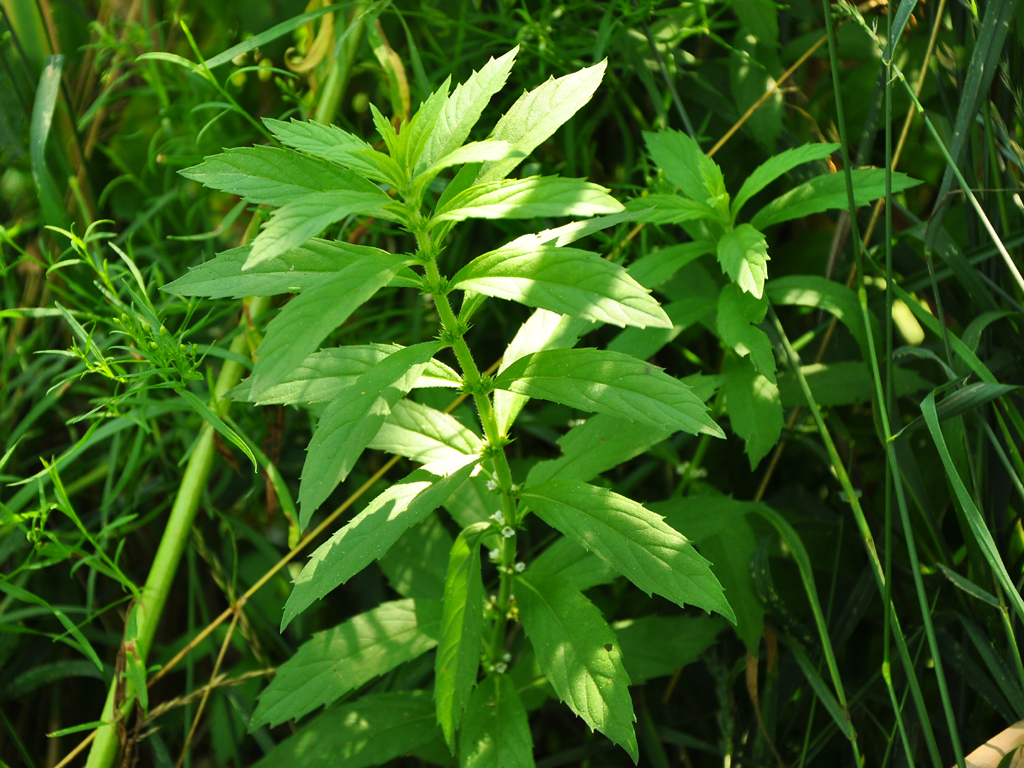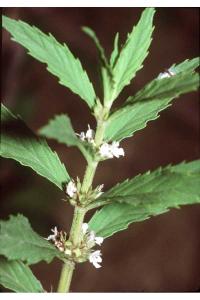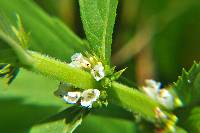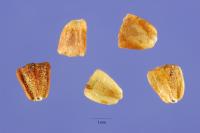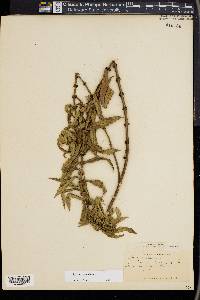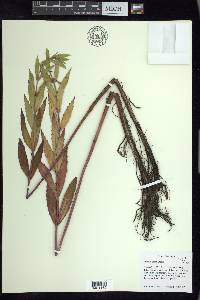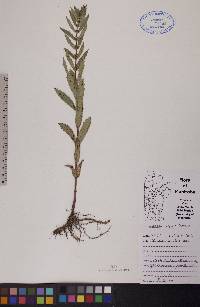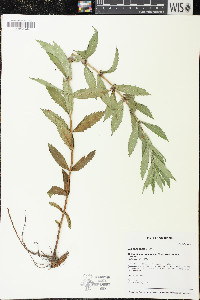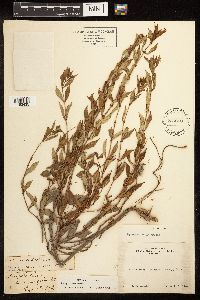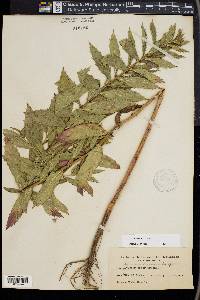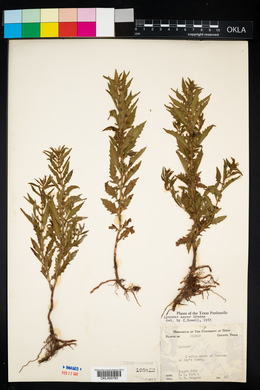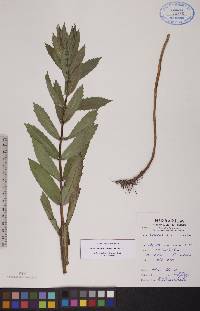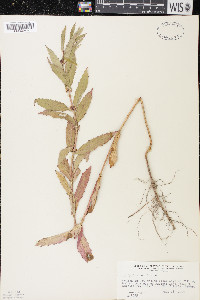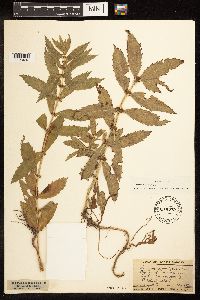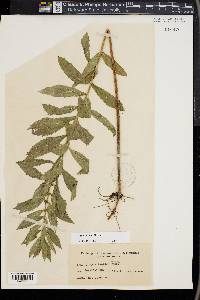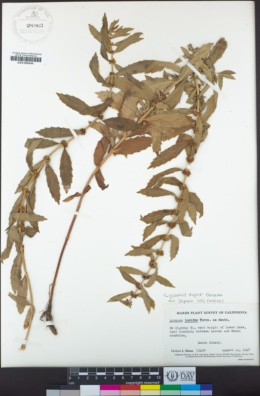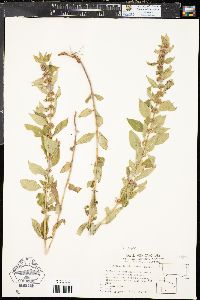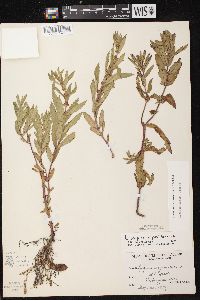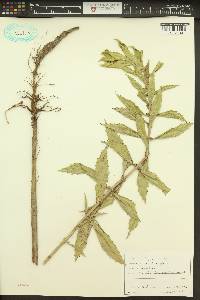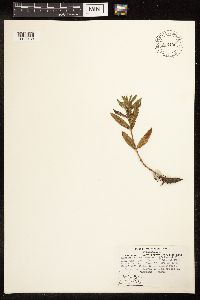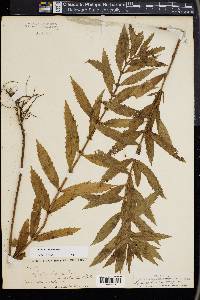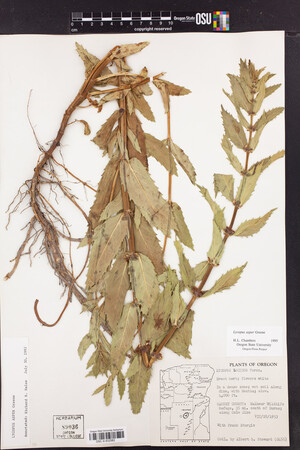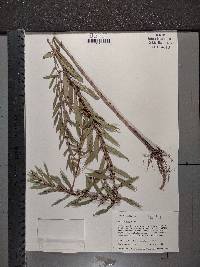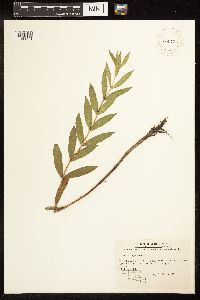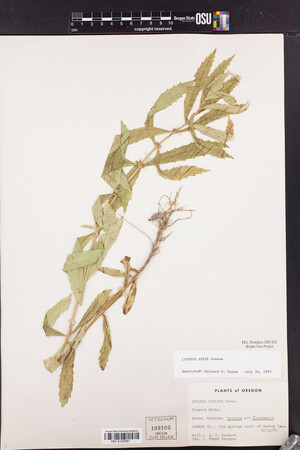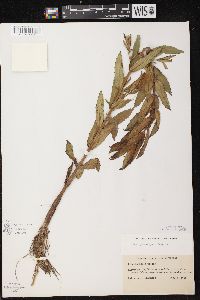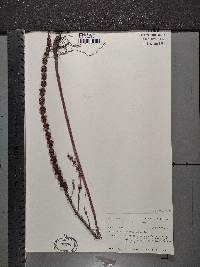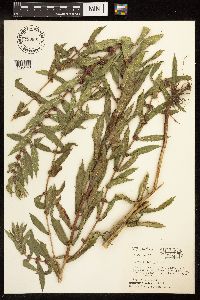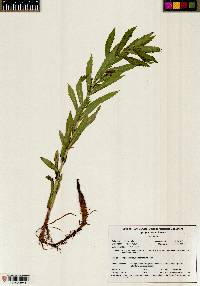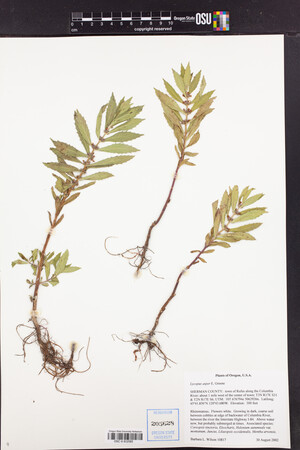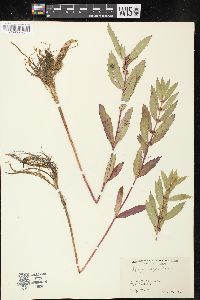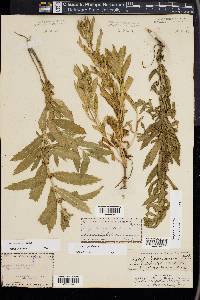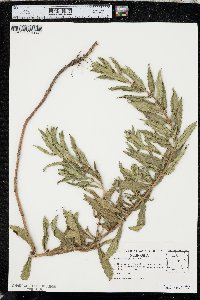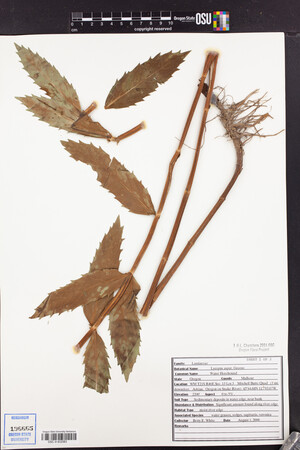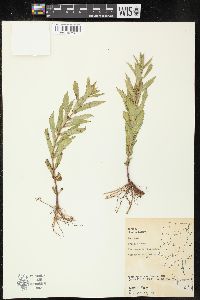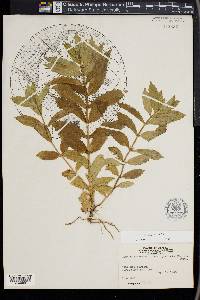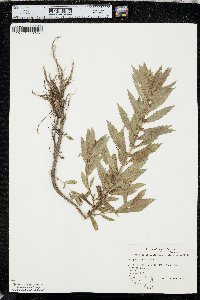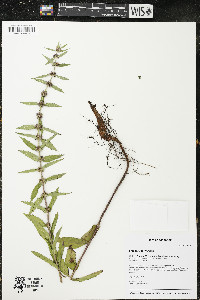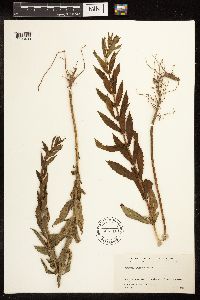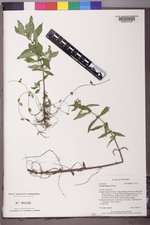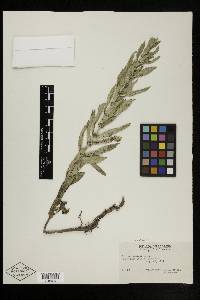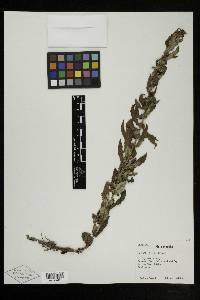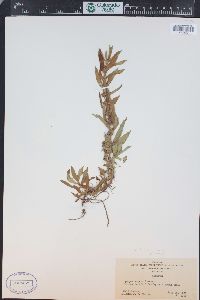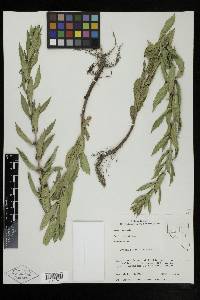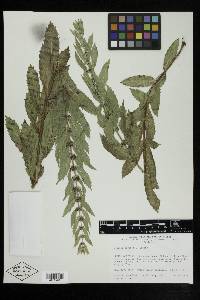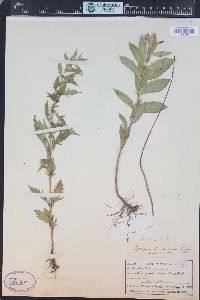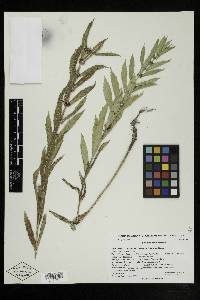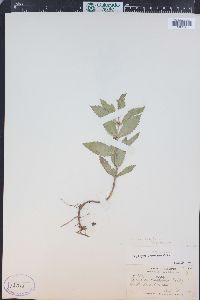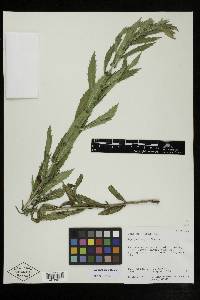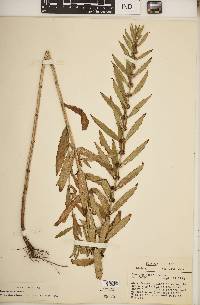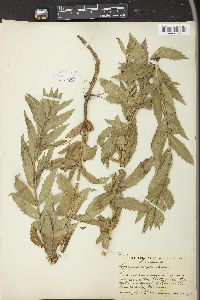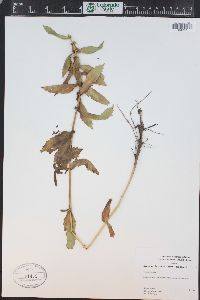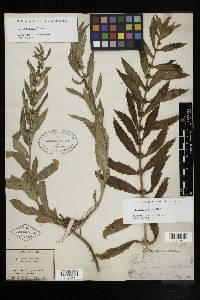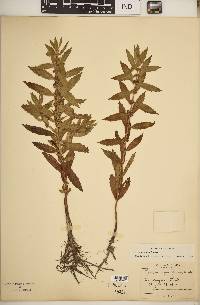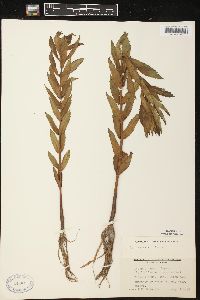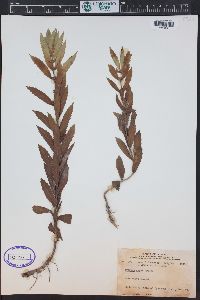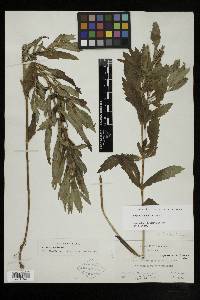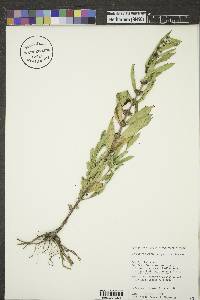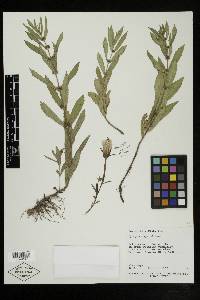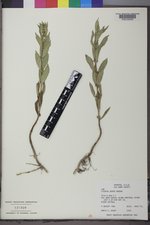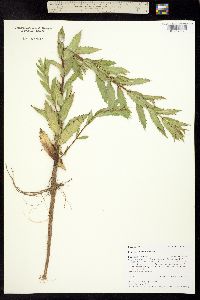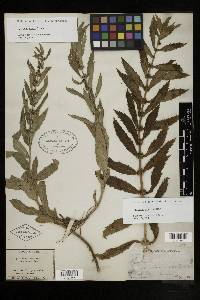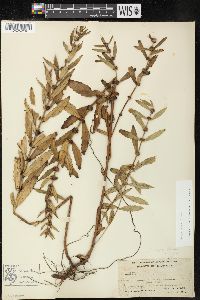Lycopus asper
|
|
|
|
Family: Lamiaceae
Rough Water-Horehound, more...rough bugleweed
[Lycopus lucidus auct. p.p. non Turcz. ex Benth., moreLycopus lucidus subsp. americanus (A. Gray) Hultén, Lycopus lucidus var. americanus A. Gray, Lycopus maritimus] |
Heil et al. 2013, Correll and Johnston 1970, Allred and Ivey 2012, Harrington 1954 Duration: Perennial Nativity: Native Lifeform: Forb/Herb General: Non-aromatic perennial herb, 25-65 cm tall, from elongate tubers; stems erect, stout, square in cross section, unbranched or occasionally forking, pubescent or nearly hairless. Leaves: Opposite and sessile to subsessile; blades elliptic, 4-7 cm long and 1-2 cm wide, with serrate margins; surfaces covered with small punctate glands. Flowers: White, in small clusters, 5-10 mm wide, in leaf axils; calyx 3-4 mm long, topped with 5 long-pointed teeth; corolla 3-4 mm long, white, bugle-shaped and topped with 4-5 rounded lobes. Fruits: Nutlets 4 per flower, a little longer than the calyx tube, with a corky margin extending down the sides to the base. Ecology: Found in riparian and other moist to wet areas, in desert scrub and pinyon-juniper communities, from 4,500-7,000 ft (1372-2134 m) in the southwest; flowers June-September. Distribution: Throughout western N. Amer. from AK to CA, east to MI, IL, MO, and TX Notes: This tuber-bearing species of moist ground resembles a mint (Mentha spp.) but does not smell minty. Flowers are inconspicuous in little clusters at the base of leaves. The white petals are about the same length as the sepals so are not particularly visible. Quite similar to L. americanus in appearance and habitat; to distinguish betwen the species, focus on the leaves. L. asper has sessile leaves with shallowly toothed margins. In particular the leaves closer to the bottom of the plant are truly sessile, while those near the top may have short, broadly winged petioles up to 2 mm long. L. americanus has leaves with winged petioles 4-9 mm long, and the margins of the leaves are pectinately lobed near the base, and often irregularly toothed or lobed closer to the leaf tip. Ethnobotany: The tubers were eaten, and a decoction of the plant was given to children as a laxative. Etymology: Lycopus comes from the Greek lycos, wolf, and pous, foot, or wolf-footed; asper means rough, probably referring to the pubescence on the stems of some individuals. Synonyms: Lycopus lucidus Editor: AHazelton 2017 Rhizomes tuberous-thickened at the tip, the tuber producing a single stem the next year; stem spreading-hairy, at least on the angles; lvs numerous, narrowly oblong to oblanceolate, 4-10 נ0.6-3.5 cm, sessile or subsessile and usually broad-based, rather coarsely but fairly evenly serrate, glabrous or often scabrous to hirsute-puberulent; cal-lobes 5, narrow, firm, slenderly subulate- pointed, with evident midnerve, distinctly surpassing the mature nutlets; cor 4-lobed, barely surpassing the cal; nutlets mostly 1.6-2.1 נ1.4-1.8 mm, the outer apical margin truncate and often irregularly toothed, the inner angle much shorter and not tuberculate, the set of 4 nutlets therefore with a depressed center; 2n=22. Minn., Io., and Sask. to B.C. and Calif., and intr. about the w. end of Lake Erie in Mich. and Ont. Gleason, Henry A. & Cronquist, Arthur J. 1991. Manual of vascular plants of northeastern United States and adjacent Canada. lxxv + 910 pp. ©The New York Botanical Garden. All rights reserved. Used by permission. From Flora of Indiana (1940) by Charles C. Deam Indiana Coefficient of Conservatism: C = null, non-native Wetland Indicator Status: OBL |

